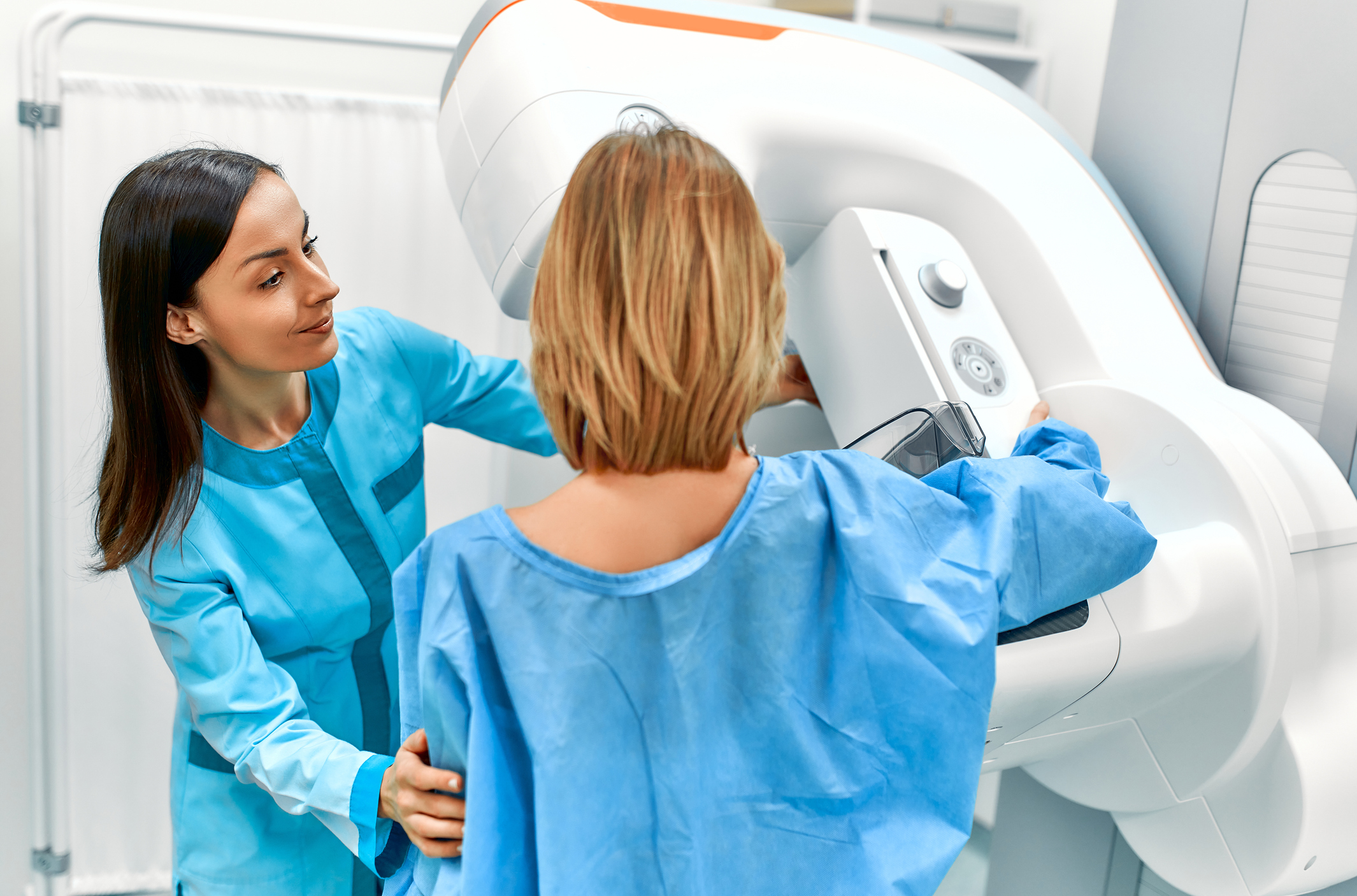Media release
From:
New Australian AI algorithm accurately predicts cardiovascular risk using mammograms
‘Two-for-one’ screening could help detect the leading killer of Australian women
A new machine learning model developed by The George Institute for Global Health can successfully predict heart disease risk in women by analysing mammograms. The findings were published today in Heart,1 the official journal of the British Cardiovascular Society.
Developed in collaboration with the University of New South Wales and University of Sydney, this is the first deep learning algorithm based on only mammographic features and age to predict major cardiac events with comparable accuracy to traditional cardiovascular risk calculators.
Associate Professor Clare Arnott, Global Director of the Cardiovascular Program at The George Institute said that new ways to identify women at risk of cardiovascular disease (CVD) were needed, given that many women are not accessing or being offered CV risk screening in the community.
“It’s a common misconception that CVD predominantly affects men, resulting in underdiagnosis and undertreatment of the condition in women. By integrating CV risk screening with breast screening through the use of mammograms - something many women already engage with at a stage in life when their cardiovascular risk increases - we can identify and potentially prevent two major causes of illness and death at the same time.”
The model was designed and validated using routine mammograms from over 49,000 women* in metropolitan and rural areas of Victoria, Australia, linked to individual hospital and death records. Researchers then compared the model to traditional models that require multiple data points based on known CV risk factors such as blood pressure and cholesterol.
“We found that our model performed just as well without the need for extensive clinical and medical data,” said A/Prof Arnott.
Previous research to date has focused on certain mammographic features such as breast arterial calcification (BAC), which has been found to be associated with cardiovascular risk in some populations. Relying on BAC alone, however, has limitations.2 For example, BAC is less accurate at predicting CVD risk in older women.2
“Our model is the first to use a range of features from mammographic images combined simply with age - a key advantage of this approach being that it doesn’t require additional history taking or medical record data, making it less resource intensive to implement, but still highly accurate,” Professor Arnott added.
In Australia and globally, cardiovascular disease is the leading cause of mortality in women – accounting for one in four female deaths annually in Australia, and approximately 9 million deaths worldwide, or around one third of all deaths in women.3,4 An estimated 580,000 adult women in Australia have experienced one or more heart, stroke or vascular conditions.4
Despite the high burden of disease, multiple studies internationally and in Australia have shown that cardiovascular disease symptoms and risk factors are under-considered in women, leading to fewer diagnostic tests, specialist referrals and prescriptions in women compared to men.5,6
In Australia, women under 55 are 37% less likely than men to receive recommended preventive medications, such as statins and antihypertensives. Only 22% of Australian women with coronary heart disease are prescribed all four guideline-recommended medications, compared to 34% of men - highlighting a significant gender gap in cardiovascular care.6
Conversely, mammography-based screening programmes have effectively engaged women in several countries, with participation rates exceeding 50% in Australia – where breast screening is provided free of charge for eligible women through the national Breast Screen program – and reaching more than 67% of women in the United States and the United Kingdom.7,8,9
Dr Jennifer Barraclough, Research Fellow at The George Institute, said that leveraging an existing risk screening process already widely utilised by women, means this model could serve as a cardiovascular risk prediction tool for women in diverse communities across Australia and around the world.
“We hope this technology will one day provide greater, and more equitable access to screening in rural areas, as many women already benefit from mobile mammography units free of charge,” she said.
“We have shown the potential of this innovative new screening tool, so we now look forward to testing the model in additional, diverse, populations and understanding potential barriers to its implementation.”
-ends-
*The Lifepool cohort was established by the Peter MacCallum Cancer Centre, the University of Melbourne, and the Royal Melbourne Hospital, with participants recruited from Breast Screen sites across metropolitan and rural areas. It was established in 2009 and has enrolled 54,000 women.
References
- Barraclough J, et al. Predicting cardiovascular events from routine mammograms using machine learning. Heart. 2025. https://doi.org/10.1136/heartjnl-2025-325705
- Allen TS, Bui QM, Petersen GM, Mantey R, Wang J, Nerlekar N, et al. Automated Breast Arterial Calcification Score Is Associated With Cardiovascular Outcomes and Mortality. JACC: Advances. 2024;3(11):101283. https://doi.org/10.1016/j.jacadv.2024.101283
- Di Cesare M, et al. The heart of the world. Global heart. 2024. https://doi.org/10.5334/gh.1288
- Australian Institute of Health and Welfare. Heart, stroke and vascular disease: Australian facts. Canberra: AIHW; 2022. Available from: https://www.aihw.gov.au/reports/heart-stroke-vascular-diseases/hsvd-facts/contents/disease-types
- Al Hamid A, et al. Gender Bias in Diagnosis, Prevention, and Treatment of Cardiovascular Diseases: A Systematic Review. Cureus. 2024. https://doi.org/10.7759/cureus.54264
- Hyun KK, Redfern J, Patel A, Peiris D, Brieger D, Sullivan D, et al. Gender inequalities in cardiovascular risk factor assessment and management in primary healthcare. Heart. 2017 Mar 1;103(7):492–8. https://doi.org/10.1136/heartjnl-2016-310216
- Australian Institute of Health and Welfare. BreastScreen Australia monitoring report 2022. Canberra: AIHW; 2022. Available from: https://www.aihw.gov.au/reports/cancer-screening/breastscreen-australia-monitoring-report-2022/summary
- Centers for Disease Control and Prevention. Health, United States, 2020-2021: National Center for Health Statistics; 2021. Available from: https://www.cdc.gov/nchs/hus/topics/mammography.htm#:~:text=The%20age%2Dadjusted%20percentage%20of,within%20the%20past%202%20years
- S. Deandrea, A. Molina-Barceló, A. Uluturk, J. Moreno, L. Neamtiu, et al. Presence, characteristics and equity of access to breast cancer screening programmes in 27 European countries in 2010 and 2014. Results from an international survey. Preventive Medicine. 2016;91:250-263. https://doi.org/10.1016/j.ypmed.2016.08.021



 Australia; NSW
Australia; NSW


